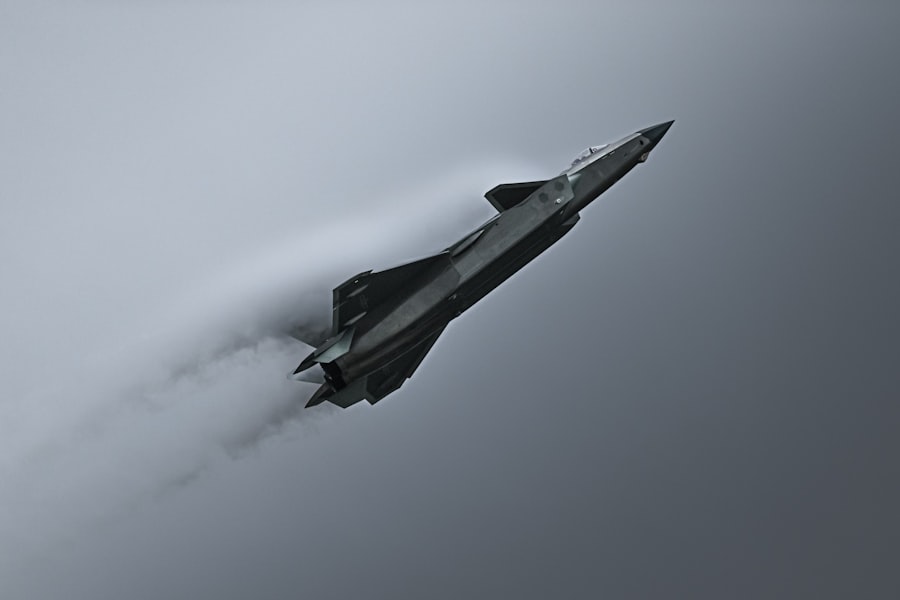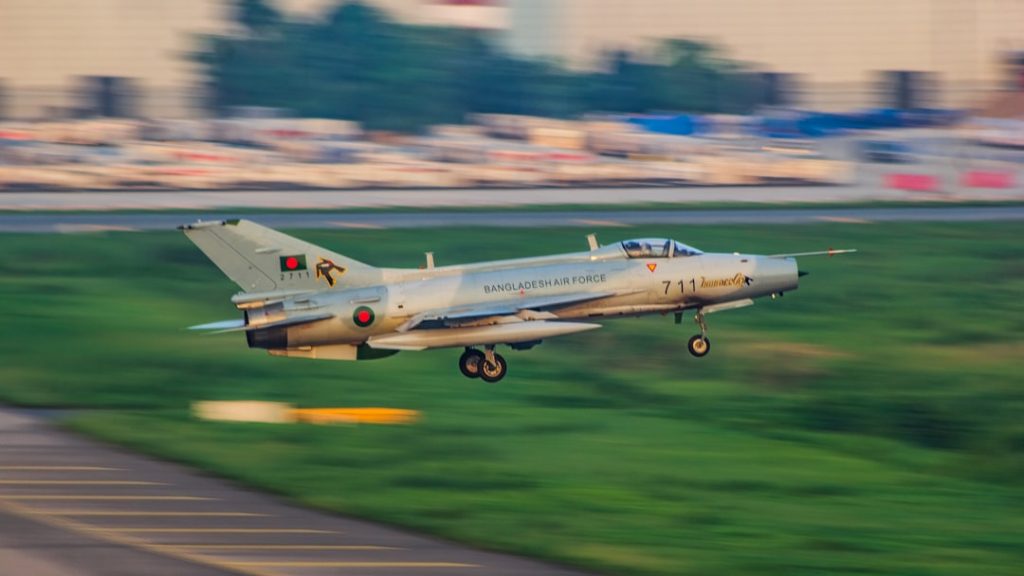The concept of the sound barrier emerged in the early 20th century, coinciding with the rapid advancements in aviation technology. As aircraft began to reach higher speeds, aviators and engineers became increasingly aware of the challenges posed by approaching the speed of sound, which is approximately 343 meters per second (1,125 feet per second) at sea level. The term “sound barrier” refers not only to the physical phenomenon of shock waves that occur when an object travels faster than sound but also to the psychological barriers that pilots faced when attempting to achieve supersonic flight.
Early pioneers like Orville and Wilbur Wright laid the groundwork for powered flight, but it was not until the 1930s and 1940s that serious efforts were made to understand and overcome the limitations imposed by transonic and supersonic speeds. During World War II, the need for faster and more agile aircraft became paramount. Engineers began to study the aerodynamic effects of high-speed flight, leading to significant innovations in aircraft design.
The development of jet propulsion systems further accelerated this race against the sound barrier. By the late 1940s, the aviation community was on the brink of a breakthrough, with several aircraft designed specifically to test the limits of speed. The culmination of these efforts came on October 14, 1947, when Captain Charles “Chuck” Yeager piloted the Bell X-1, a rocket-powered aircraft, to become the first person to officially break the sound barrier.
This historic flight not only marked a significant milestone in aviation history but also opened up new possibilities for military and civilian aviation.
Key Takeaways
- The sound barrier was first broken in 1947 by Chuck Yeager in the Bell X-1 aircraft, marking a significant milestone in aviation history.
- The race to break the sound barrier was a highly competitive and secretive endeavor, with multiple countries and companies vying for the title of the fastest jet in the world.
- The development of the fastest jet in the world, such as the Lockheed SR-71 Blackbird, involved cutting-edge technology and engineering to achieve unprecedented speeds.
- Breaking the sound barrier requires overcoming the aerodynamic challenges of shock waves and compressibility effects, which was made possible through advancements in aircraft design and materials.
- The impact of breaking the sound barrier on aviation was profound, leading to the development of supersonic passenger jets and military aircraft with unparalleled speed and performance.
The Race to Break the Sound Barrier
The race to break the sound barrier was characterized by intense competition among various nations and aerospace companies. In the United States, the Bell X-1 was developed under a secretive program initiated by the National Advisory Committee for Aeronautics (NACA), which later became NASThe X-1 was designed with a sleek fuselage and a rocket engine that allowed it to reach speeds exceeding Mach 1. The aircraft’s design was heavily influenced by wind tunnel testing, which provided critical data on how air behaves at high speeds.
Yeager’s successful flight in the X-1 not only demonstrated that breaking the sound barrier was possible but also set off a flurry of activity in both military and civilian aviation sectors. Meanwhile, in Europe, engineers were also racing to achieve supersonic flight. The British de Havilland Comet, introduced in 1949, was one of the first commercial jetliners but faced challenges related to structural integrity at high speeds.
Concurrently, Soviet engineers were developing their own high-speed aircraft, such as the Mikoyan-Gurevich MiG-15, which would later play a significant role in the Korean War. The competition extended beyond just breaking the sound barrier; it encompassed advancements in aerodynamics, materials science, and propulsion systems. Each nation sought to establish its technological superiority in aviation, leading to a period of rapid innovation that would shape the future of flight.
The Development of the Fastest Jet in the World

The quest for speed in aviation led to the development of several remarkable aircraft designed specifically to push the boundaries of flight. Among these, the North American X-15 stands out as one of the fastest jets ever built. Designed for research purposes, the X-15 was a rocket-powered aircraft that could reach altitudes beyond 100 kilometers and speeds exceeding Mach 6.7.
Its development began in the late 1950s as part of a joint program between NASA and the U.S. Air Force. The X-15’s design incorporated advanced materials and technologies that allowed it to withstand extreme temperatures generated during high-speed flight.
Pilots like Neil Armstrong and Jim Irwin flew the X-15 on numerous missions, gathering invaluable data on aerodynamics and human factors at hypersonic speeds. The insights gained from these flights contributed significantly to both military aviation and space exploration. The X-15 program not only set records for speed and altitude but also paved the way for future aircraft designs, including those used in space travel.
Its legacy continues to influence modern aerospace engineering, demonstrating how pushing the limits of speed can yield profound advancements in technology.
The Technology Behind Breaking the Sound Barrier
| Technology | Description |
|---|---|
| Supersonic Aircraft | Aircraft capable of traveling faster than the speed of sound (Mach 1) |
| Jet Engines | Powerful engines that provide the thrust needed to break the sound barrier |
| Aerodynamics | Design of the aircraft’s shape and structure to minimize drag and increase stability at high speeds |
| Materials | High-strength and heat-resistant materials to withstand the stresses of supersonic flight |
| Flight Control Systems | Advanced systems to control the aircraft’s movements and maintain stability during supersonic flight |
Breaking the sound barrier involves overcoming several complex physical phenomena associated with high-speed flight. As an aircraft approaches transonic speeds, it encounters increased drag due to shock waves forming around its structure. These shock waves can lead to a dramatic increase in aerodynamic resistance, making it challenging for pilots to maintain control.
To address these issues, engineers have developed various technologies aimed at reducing drag and enhancing stability during supersonic flight. One key innovation is the use of swept wings, which help delay shock wave formation by altering airflow over the wings. Aircraft like the Concorde and the Boeing 747 utilized this design feature to achieve higher speeds while maintaining control and efficiency.
Additionally, advancements in materials science have led to the development of lightweight yet durable composites that can withstand extreme conditions encountered during supersonic flight. These materials are essential for constructing airframes capable of enduring high temperatures generated by air friction at such speeds.
The Impact of Breaking the Sound Barrier on Aviation
The successful breach of the sound barrier had far-reaching implications for aviation as a whole. It not only revolutionized military aircraft design but also laid the groundwork for commercial supersonic travel. The introduction of jets capable of flying faster than sound opened new routes and reduced travel times significantly.
For instance, the Concorde, which entered service in 1976, could fly from New York to London in under four hours—half the time required by conventional subsonic airliners. Moreover, breaking the sound barrier spurred advancements in aerodynamics and engineering practices that permeated all levels of aviation design. The knowledge gained from supersonic flight has influenced everything from commercial airliners to military fighter jets, leading to improved performance and safety standards across the industry.
Additionally, it inspired a new generation of engineers and scientists who sought to explore further possibilities in aerospace technology.
The Fastest Jet in the World: Performance and Speed

As of October 2023, one of the fastest jets ever built is the North American X-15, which holds records for both speed and altitude among manned aircraft. With a maximum speed of Mach 6.7 (approximately 4,520 miles per hour), it remains unmatched in terms of sheer velocity achieved by a piloted jet. The X-15’s performance was made possible through its innovative design and powerful rocket engines that provided thrust far beyond what conventional jet engines could achieve.
In addition to its speed capabilities, the X-15 was equipped with advanced instrumentation that allowed pilots to gather data on aerodynamic forces and thermal conditions during flight. This information was crucial for understanding how materials behave under extreme conditions and has informed subsequent designs for both military and civilian aircraft. While no operational jet currently matches its speed record, ongoing research into hypersonic flight aims to develop new technologies that could one day surpass even these remarkable achievements.
The Future of Supersonic Flight
The future of supersonic flight is poised for significant advancements as technological innovations continue to emerge. Companies like Boom Supersonic are actively working on developing commercial supersonic jets that promise to make high-speed travel accessible once again after decades of stagnation following Concorde’s retirement in 2003. These new aircraft are designed with noise reduction technologies aimed at addressing concerns over sonic booms that previously limited supersonic travel over land.
Additionally, advancements in propulsion systems are being explored to enhance fuel efficiency while maintaining high speeds. Electric and hybrid propulsion technologies are gaining traction as potential solutions for reducing environmental impact without sacrificing performance. As regulatory frameworks evolve to accommodate new supersonic designs, there is optimism that we may soon witness a renaissance in high-speed air travel that could reshape global connectivity.
The Challenges of Maintaining the Fastest Jet in the World
While achieving supersonic speeds presents exciting opportunities for aviation, maintaining such advanced jets poses unique challenges. One significant concern is ensuring safety during high-speed operations; pilots must be trained extensively to handle potential emergencies that may arise at extreme velocities. Additionally, maintenance protocols must be meticulously developed to address wear and tear on components subjected to intense aerodynamic forces.
Another challenge lies in regulatory compliance regarding noise pollution and environmental impact. As governments around the world grapple with climate change concerns, balancing technological advancement with sustainability will be crucial for future supersonic aircraft designs. Manufacturers will need to invest in research aimed at minimizing emissions while maximizing performance capabilities if they hope to gain approval for commercial operations.
In conclusion, breaking through the sound barrier has been a monumental achievement in aviation history that has shaped both military and civilian flight paradigms. As we look ahead toward future developments in supersonic technology, it is clear that innovation will continue driving progress while addressing challenges associated with speed and sustainability in aviation.


